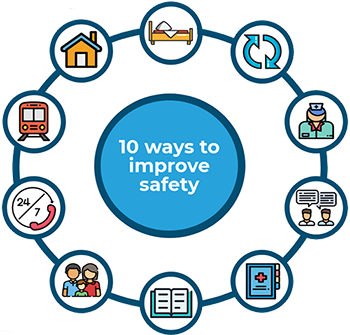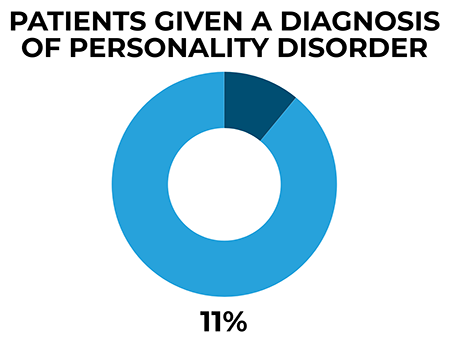
Annual report 2023: UK patient and general population data 2010-2020
Date of publication: March 2023
Our 2023 annual report provides findings relating to people aged 10 and above who died by suicide between 2010 and 2020 across all UK countries. Additional findings are presented on the number of people under mental health care who have been convicted of homicide, and those in the general population.
The NCISH database includes a national case series of suicide by patients under the care of mental health services over more than 25 years. This internationally leading database allows us to make recommendations for clinical practice and policy that will improve safety locally, nationally, and internationally.
In this year’s report, we also present data on certain themed topics, some of which are included because of current economic and societal concerns, including patients with economic adversity, those aged under 25, and suicide-related internet use.
Key messages
Clinical care
 Our findings show patient suicide numbers and rates in the UK are relatively stable. Over 2010-2020, there were 1,673 suicide deaths in the UK by patients, 27% of all general population suicides.
Our findings show patient suicide numbers and rates in the UK are relatively stable. Over 2010-2020, there were 1,673 suicide deaths in the UK by patients, 27% of all general population suicides.
We suggest that to bring these figures down in the face of sustained and growing pressures, clinicians should focus on common factors associated with suicide including living alone, self-harm, and comorbid alcohol and drug misuse. Loss of contact is still common before suicide, and services should actively re-establish care in this situation, involving family members where possible.
Acute care
In-patient admission and recent discharge from hospital continue to be periods of high risk. During 2010-2020, over a quarter (28%) of patients died by suicide in acute care settings, including in-patients, post-discharge care and crisis resolution/home treatment. Of the estimated 70 suicides by mental health in-patients in the UK, half were on agreed leave. The highest number of deaths after discharge from psychiatric in-patient care occurred on day 3 post-discharge.
We recommend clinical services should improve patient safety at these times by (1) removal of low-lying ligature points and (2) ensuring pre-discharge leave and discharge planning address adverse circumstances the patient may be returning to. These recommendations form part of our 10 ways to improve safety

Economic adversity
 In 2016-2020, there were 373 deaths per year in patients who had experienced recent economic adversity, i.e., serious financial problems and loss of job, benefits or housing. The number increased over this five-year period.
In 2016-2020, there were 373 deaths per year in patients who had experienced recent economic adversity, i.e., serious financial problems and loss of job, benefits or housing. The number increased over this five-year period.
We are entering a period of rising costs of living when patients are likely to be at additional risk. We suggest frontline staff should be aware of the risks of new problems concerning the loss of jobs, benefits and housing, among other issues, and should have the information to signpost patients to sources of financial support and advice.
Patients aged under 25 years
 The increase in suicide among young people in the general population is also reflected in the patient population. There were 1,619 suicides by patients aged under 25 (10-24 years) in 2010-20, an average of 147 deaths per year; 235 were aged under 18, an average of 21 per year. This represents around 20% of general population suicides in these young age groups, a lower proportion than in older groups (27%).
The increase in suicide among young people in the general population is also reflected in the patient population. There were 1,619 suicides by patients aged under 25 (10-24 years) in 2010-20, an average of 147 deaths per year; 235 were aged under 18, an average of 21 per year. This represents around 20% of general population suicides in these young age groups, a lower proportion than in older groups (27%).
Our data indicate patients under 18 and those aged 18-24 show different characteristics and risks relevant to prevention. We suggest, for patients under 18, the role of family and educational settings, and the management of anxiety and autism, are especially important. In the older group, we recommend prevention should stress the treatment of severe mental illness and co-morbid substance misuse. Self-harm services are crucial to both groups.
Patients given a diagnosis of personality disorder
Our findings show an increase in the number of patients given a diagnosis of personality disorder since 2010, accounting for 11% of all patient suicides in 2010-2020 overall. The majority (57%) were female. Women given a diagnosis of personality disorder were more often younger, living alone, unemployed and homeless than women with other diagnoses. Most men and women given a diagnosis of personality disorder had a history of self-harm and alcohol and/or drug misuse.
We suggest addressing these patients’ needs is an essential component of prevention by services. Historically, they have been excluded from services, and better models of safe and compassionate care are now needed.

Patients who identify as lesbian, gay, bisexual or trans
 In 2016-20, there were 223 deaths by patients who identified as lesbian, gay, or bisexual (LGB) and 37 patients within a trans group, an average of 49 deaths per year. LGB and trans patients were younger than other patients. A high proportion had experienced childhood abuse. Self-harm and personality disorder diagnosis were common in this group.
In 2016-20, there were 223 deaths by patients who identified as lesbian, gay, or bisexual (LGB) and 37 patients within a trans group, an average of 49 deaths per year. LGB and trans patients were younger than other patients. A high proportion had experienced childhood abuse. Self-harm and personality disorder diagnosis were common in this group.
We ask clinicians to be aware of the prejudice that patients in LGB and trans groups may have experienced and other factors that may add to suicide risk. They should ensure these are reflected in engagement, assessments and care plans. Many have a history of abuse, and psychological therapies addressing previous trauma should be offered.
Suicide-related internet use
 We found evidence of suicide-related internet use in 8% of all patient suicides. This included obtaining information on suicide method, visiting pro-suicide websites, and communicating suicidal intent online. These patients were most often aged 25-44 years (42%) or aged 45-64 (33%); 18% were aged under 25.
We found evidence of suicide-related internet use in 8% of all patient suicides. This included obtaining information on suicide method, visiting pro-suicide websites, and communicating suicidal intent online. These patients were most often aged 25-44 years (42%) or aged 45-64 (33%); 18% were aged under 25.
We suggest clinicians need to be aware that suicide-related internet use is a feature of suicide by mental health patients of all ages; that it takes several forms, including the promotion of suicide methods; and that enquiry about exposure to internet risks should be a routine part of risk assessment.
